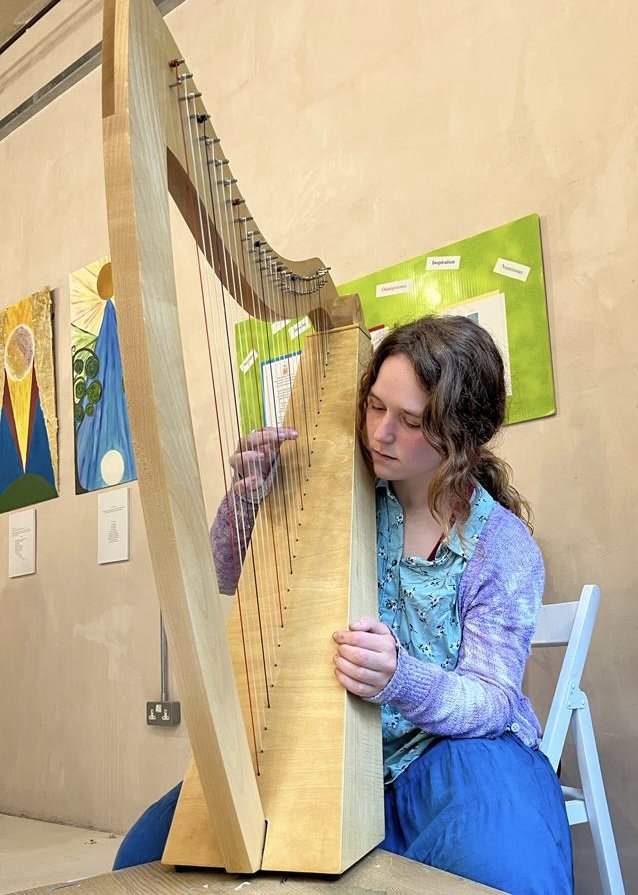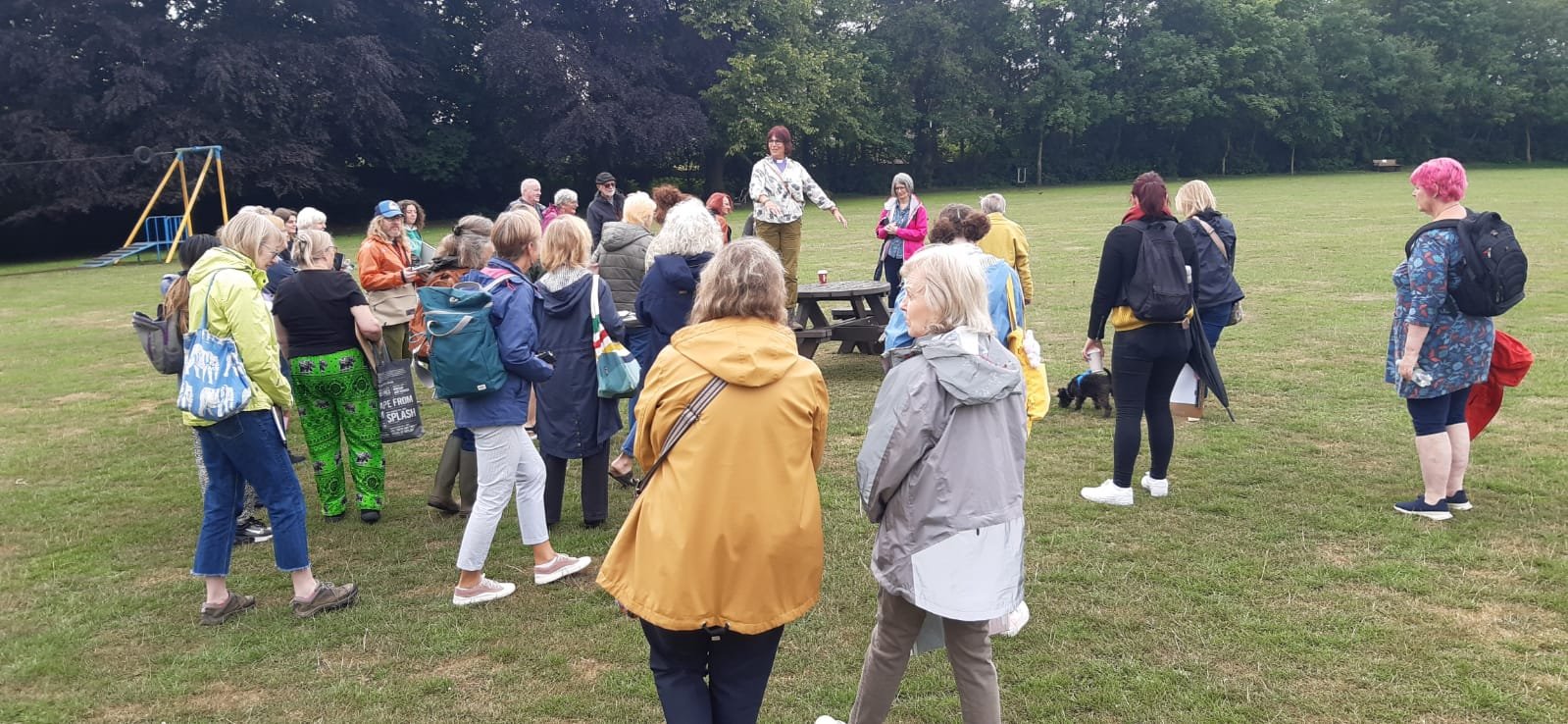Summer School Shepton Mallet 2023
Introducing the Exhibition
Rev’d Gill Sakakini
Musician - Danielle
An Exhibit - Jan
Working on a group piece.
A drawing activity in Collett Park
Time to reflect near the pond

Introducing the Exhibition
Rev’d Gill Sakakini

Musician - Danielle

An Exhibit - Jan

Working on a group piece.

A drawing activity in Collett Park

Time to reflect near the pond

As a friend of Gilly Sakakini, I had long anticipated the coming of the book Imaging the Story, co-written with Karen Case-Green. I first met Gilly at the Grünewald Guild, a liturgical art guild in Washington state, where we were both teaching. Subsequently, in 2010, I participated in a Guild Art-focused trip to the UK that Gilly led. The founders of the Grünewald Guild, Richard and Liz Caemmerer, were also on the trip to Old Basing and surrounding inspirational art sites. It was a life-changing retreat for me.
I had longed to do an in person small group study of the book, but because of Coved we were only able to do it virtually. This was a first, as the book study is designed to be done in person. It took a long time to find just the right participants. There were four of us, 3 weavers and a potter, all teachers of our art forms. We were from Indiana and Kentucky.
All of us are women who have a strong faith base. All of us were looking to connect our art and faith in a way that this book challenged us to do. We met about once every 3 weeks via Zoom. We did the art assignments when appropriate but also used the inspiration we received from the book to help spark our own studio practice.
At the time I was teaching a virtual Tapestry class for Indiana University. I am mostly a weaver of scarves and vestments, so Tapestry is something that I have studied, done, and taught, but it is outside of my comfort zone. This book encouraged me to push boundaries, be open to the New, and challenge myself to create pieces not for sale (I am a production weaver) but for my own exploration and joy.
The group found that the biblical pieces of the book helped inspire us to open ourselves to the Love that flows through us when we create. I wasn’t always aware that my making is a channelling from God through my hands to the threads. Being open to this new way of creating changes who I am as an artist.
I learned to see differently, to be in search of and to celebrate the beauty of God’s creation in nature, art, the ordinary. I learned that God is the ultimate maker and designer of everything, and that I am one with God and surrounded by Love. A favorite prayer for me is, “I and my God are One”. I learned that it helps me to pray before and during my weaving process. The work I do is ultimately not for my recognition but for the Glory of God, who formed me as a weaver, teacher, and lover of beauty.
I want to thank Gilly and Karen for the gifts of love and insight that will keep on giving me and the members of my study group guidance as we do our art practice. We did not want to stop meeting, so we are now studying Art and Faith: A Theology of Making, by Makoto Fujimori. Gilly is a friend who I will treasure always, and because of her I am the artist I am today.
“I learned to see differently, to be in search of and to celebrate the beauty of God’s creation in nature, art, and the ordinary. I learned that God is the ultimate maker and designer of everything, and that I am one with God and surrounded by Love.” - Suzanne Halvorson
Opening prayer
Explain what is being looked at today
First Bible reading
Ask a question: What do you think this scenario looked like?
Look at three images relating to the Bible reading.
Images from Old Basing, Hampshire, Summer 2017

A drawing task in Collett Park, Shepton Mallet

